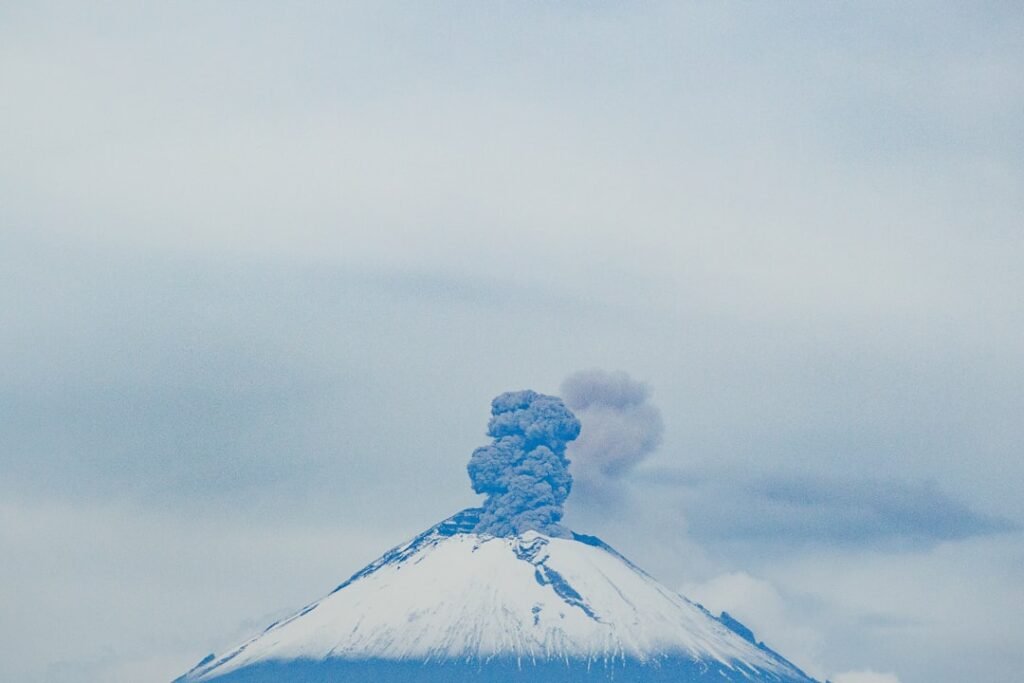You might think all volcanic fire looks the same, but deep in Indonesia lies a phenomenon that defies every expectation. Imagine standing at the edge of an active crater where electric blue flames dance across the landscape, creating a scene so otherworldly it barely seems real. Indonesia’s Kawah Ijen volcano is known for its blue fire, acidic crater lake, and labour-intensive sulfur mining, but there’s fascinating chemistry at work behind this stunning display.
The blue flames you witness aren’t actually lava at all. While most people assume they’re seeing molten rock flowing down the mountainside, the truth is far more intricate and involves sulfur chemistry that creates one of nature’s most spectacular light shows.
The Chemistry Behind Blue Flames
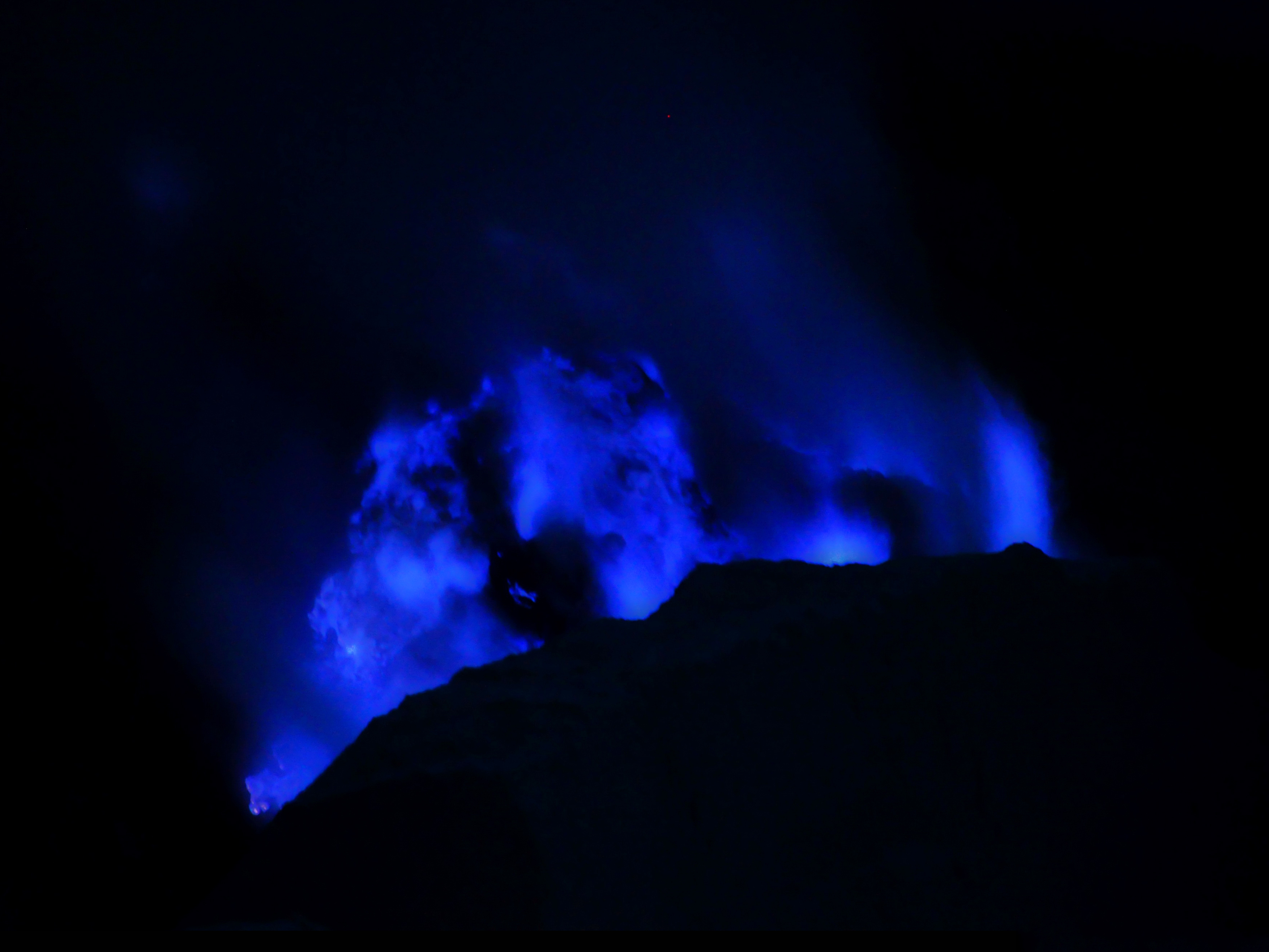
The glow is actually the light from the combustion of sulfuric gases, not molten lava as commonly misunderstood. Sulfur burns when it comes into contact with hot air at temperatures above 360 °C (680 °F), which produces the energetic flames. The basic chemistry involves sulfur reacting with oxygen in the atmosphere to create sulfur dioxide, a reaction that releases significant energy in the form of blue light.
Burning sulfur produces a blue flame due to the reaction with oxygen to form sulfur dioxide. This chemical reaction demonstrates how elements produce distinctive flame colors based on their emission spectra when electrons become excited and release photons at specific wavelengths.
Why Blue Instead of Orange or Red
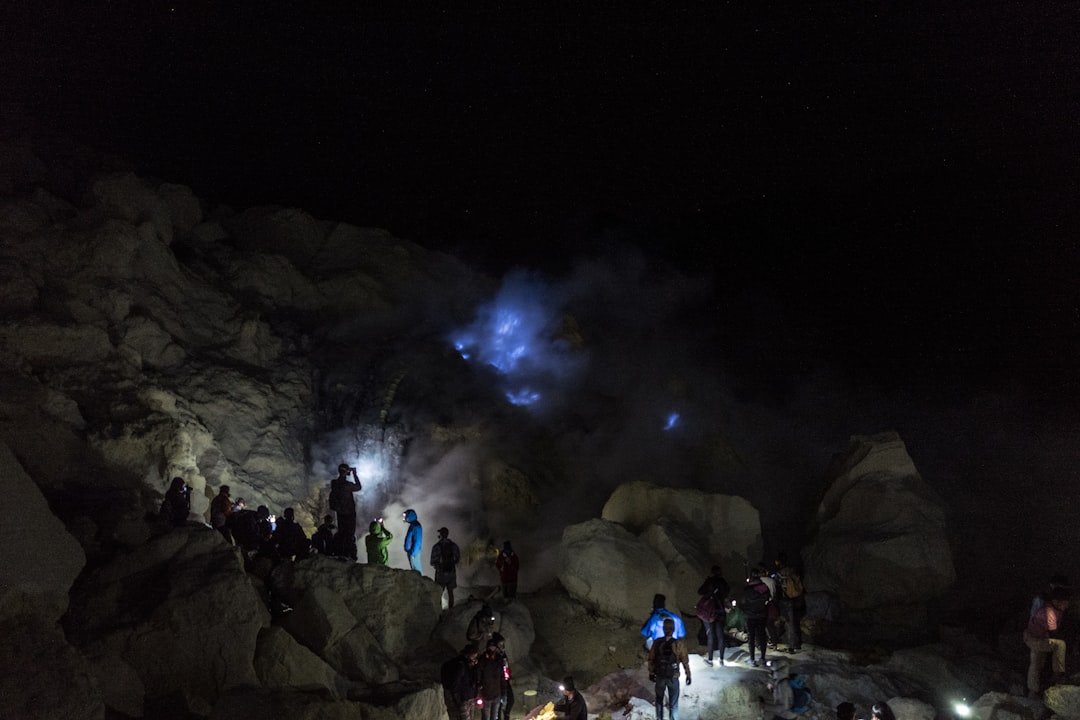
Truly-blue lava would require temperatures of at least 6,000 °C (10,830 °F), from Planck’s law, which is much higher than any lava can naturally achieve on the surface of the Earth. The blue color you see isn’t from impossibly hot lava but from sulfur’s unique combustion characteristics. The blue flame indicates that the combustion is complete and efficient, producing a clear flame rather than a smoky one. During the combustion of sulfur, sulfur dioxide is created, which is associated with a high enough temperature to produce this distinct blue color.
Unlike sodium which burns bright yellow or lithium which produces crimson flames, sulfur’s molecular structure creates this distinctive electric blue appearance. When the flame is for instance blue, it is due to excited radicals formed in the flame that emit light somewhere in the 400-500 nm range, depending on the radicals.
The Extreme Conditions at Kawah Ijen

Those gases emerge from cracks in the volcano at high pressure and temperature – up to 1,112°F (600°C). When they come in contact with the air, they ignite, sending flames up to 16 feet (5 meters) high. These aren’t gentle flickering flames you might see from a campfire. When sulfur from within the volcano breaches the surface, it can reach temperatures up to 600 °C (1,112 °F), and the sulfur immediately encounters lower temperatures and pressures at the surface, which causes the sulfur to immediately ignite and erupt blue flames up to 5 metres (16 ft) into the air.
The sheer volume of sulfuric gases at Kawah Ijen creates the perfect conditions for this phenomenon. Indonesia’s Kawah Ijen volcano, on the island of Java, which has some of the highest levels of sulfur in the world and is also a site of sulfur mining, provides the massive quantities of sulfur needed for these dramatic displays.
How Liquid Sulfur Creates Flowing Blue Rivers
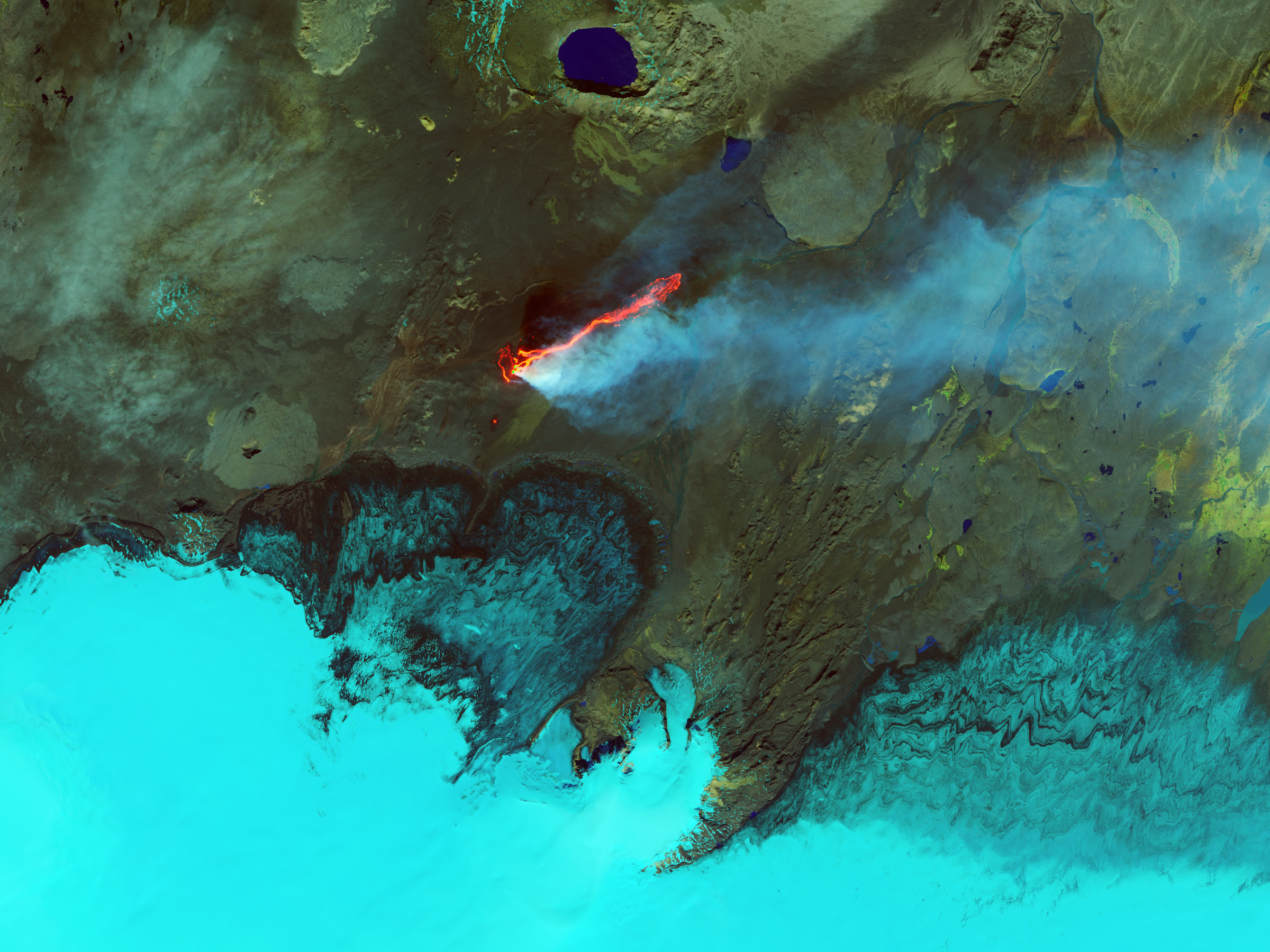
At such high temperatures, the sulfur melts, which sometimes flows down the face of the volcano while carrying the flames with it, making it appear as if blue lava is flowing down the volcano. This creates the illusion of flowing blue lava that captivates photographers and tourists worldwide. The sulfur concentrations are so intense that the blue flame can pour down the side of the volcano, making it look like the lava itself is blue (but, despite what viral images may have you believe, it’s not).
The molten sulfur behaves remarkably like lava as it flows, but The sulfur, which is deep red when molten, pours slowly from the ends of these pipes and pools on the ground, turning bright yellow as it cools. This dramatic color transformation from deep red to bright yellow as the material cools demonstrates sulfur’s unique physical properties.
The World’s Largest Acid Lake Connection
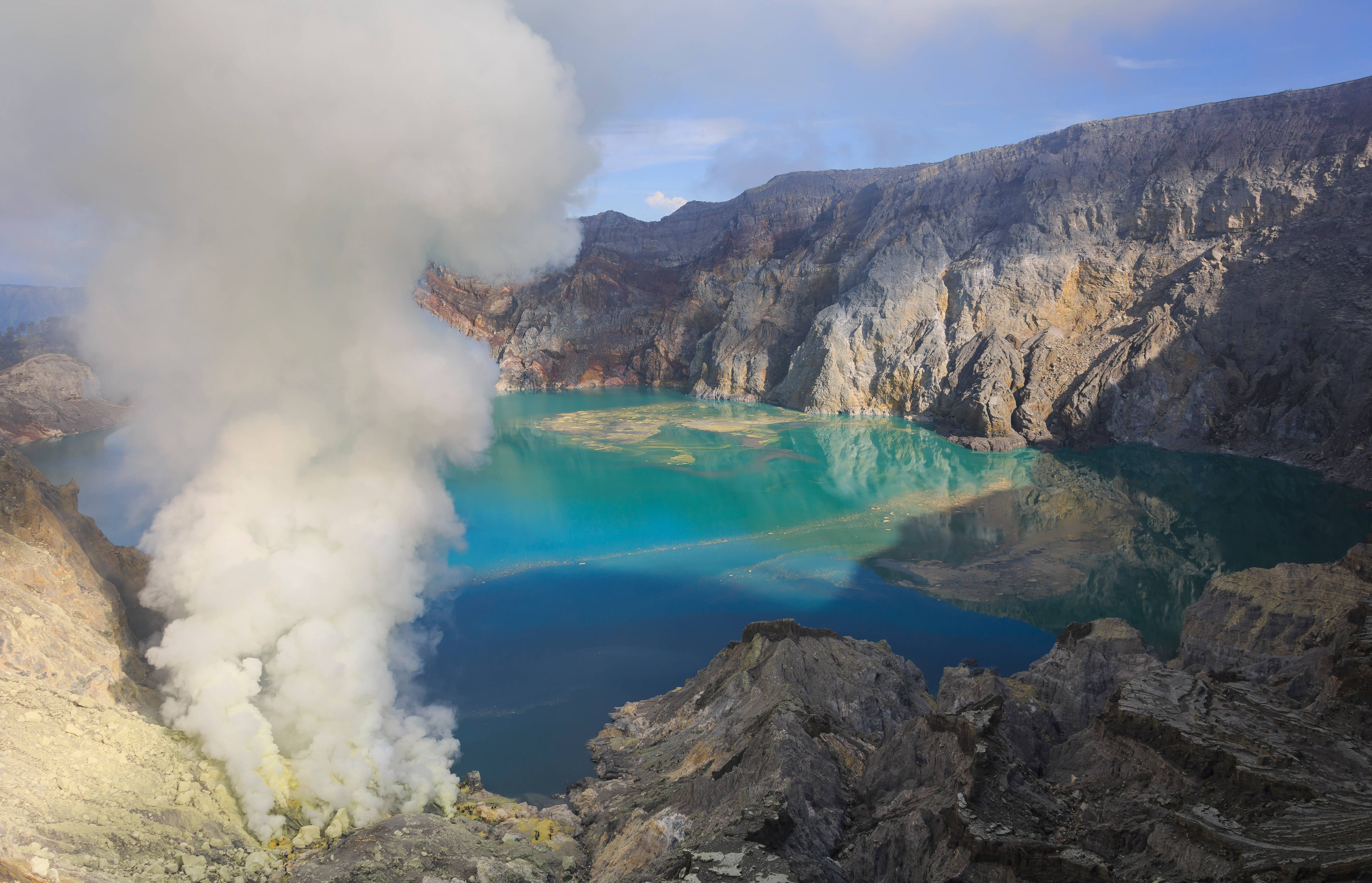
The lake is recognised as the largest highly acidic crater lake in the world, with The pH of the water at the lake’s edges was measured to be 0.5 and in the middle of the lake 0.13 due to a high concentration of sulfuric acid. This extreme acidity plays a crucial role in the sulfur chemistry occurring throughout the crater. The turquoise color of the water is caused by its extreme acidity and dissolved metal content.
The lake’s intense acidity creates a hostile environment where sulfuric compounds continuously react and produce the gases that feed the blue flames. The first is an active solfatara that emits hot, flammable sulfurous gases. These ignite as they enter Earth’s oxygen-rich atmosphere and burn with an electric blue flame.
The Dangerous Reality of Mining Operations
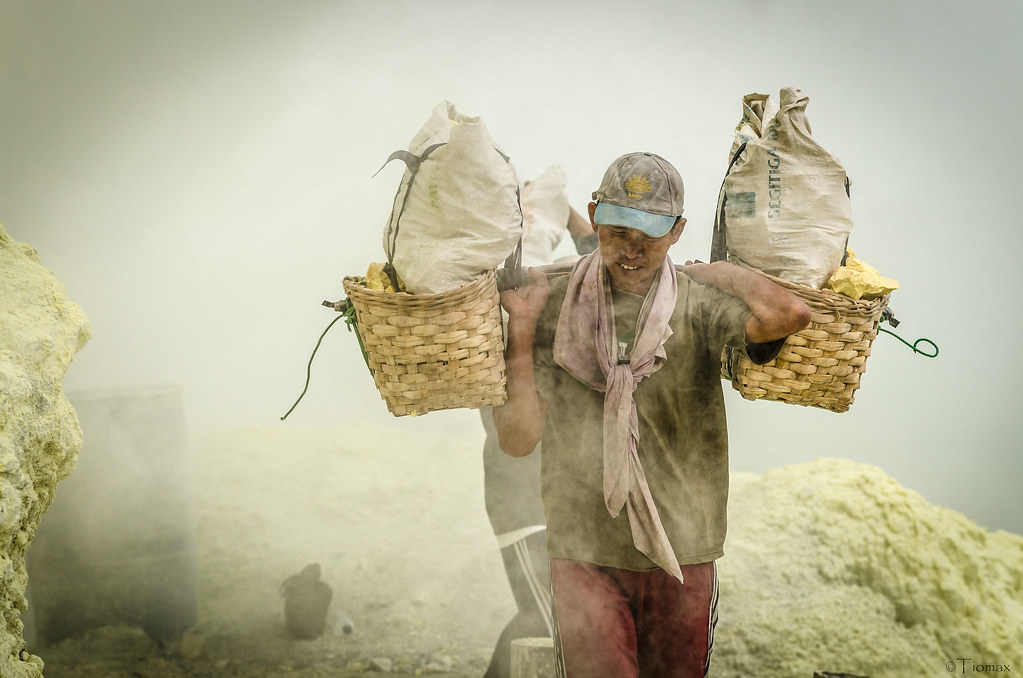
The miners – both adults and children – spend the day in the heat loading cooled sulfuric rock into baskets, then carrying them nearly two miles to collect their daily payment, which is normally less than $10 even after 12 hours of work. These workers extract sulfur that has solidified after the blue flames extinguish, creating sulfur-rich rock formations. The miners break the cooled material into large pieces and carry it away in baskets. Miners carry loads ranging from 75 to 90 kilograms (165 to 198 lb) up 300 metres (980 ft) to the crater rim, with a gradient of 45 to 60 degrees.
The working conditions expose miners to toxic sulfur dioxide gases without adequate protection. Chronic sulfur exposure can lead to throat and lung irritation, breathing problems, and risk of lung disease.
Why You Can Only See Blue Flames at Night
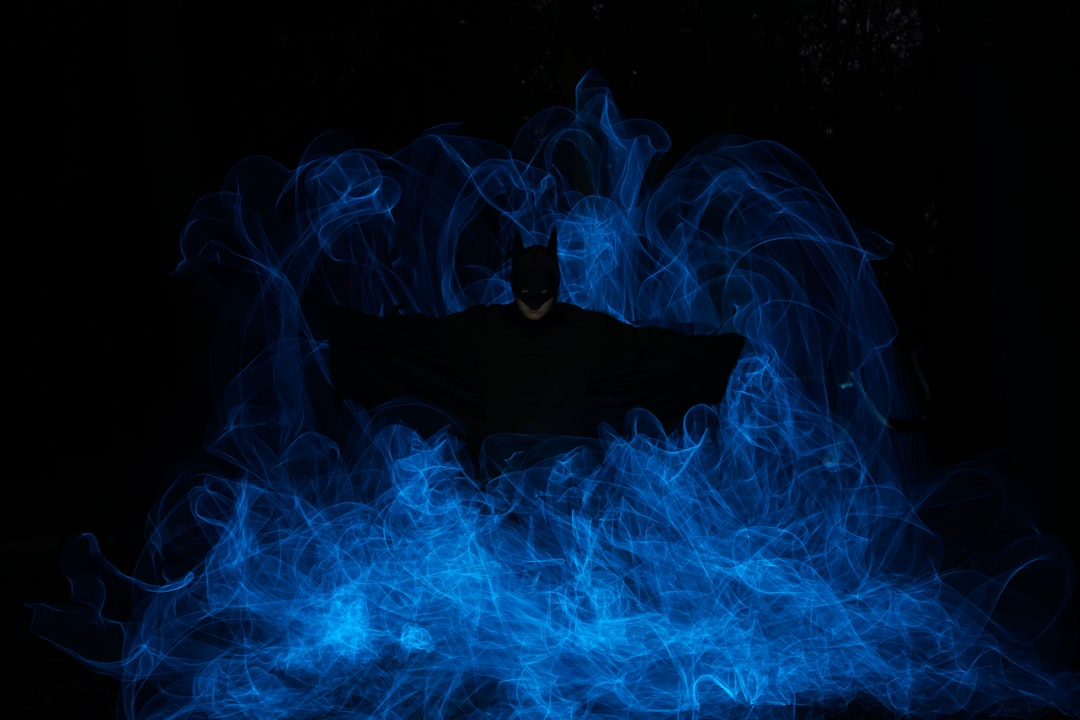
The burning happens day and night, but it’s visible only in darkness. During daylight hours, the bright sunlight overwhelms the blue flames, making them virtually invisible to the naked eye. Due to the blue color of the flames, the fires are essentially visible only at nighttime, as they are otherwise indistinguishable during the daytime.
This creates a unique tourism experience where visitors must hike in complete darkness to witness the phenomenon. Since the Kawah Ijen’s famous blue fire can only be seen in the dark, volcano tours begin in the wee hours of the morning. Booking the earliest possible tour will maximize your chances of seeing the sapphire flames before the sunrise conceals them from view.
Other Locations Where Blue Flames Occur
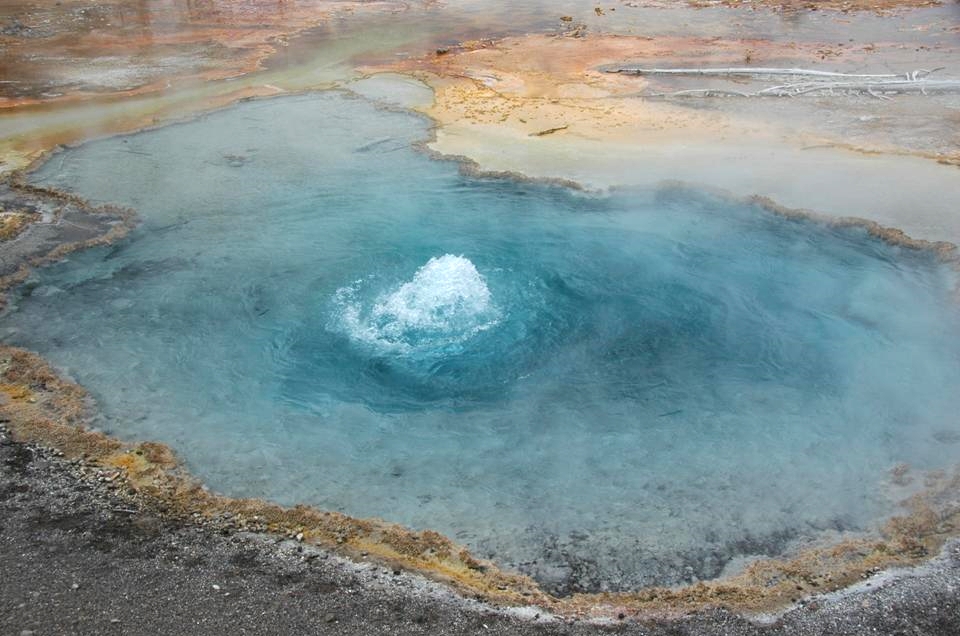
While other volcanic locations worldwide may occasionally produce blue flames under specific conditions, However, Kawah Ijen remains the most famous and accessible location for observing this phenomenon. The blue fires also occur in Yellowstone National Park during wildfires, when fires burn and melt the large amounts of sulfur present in the park, creating the appearance of burning blue rivers of lava during such events.
Other volcanoes around the world, such as Vesuvius and Kilauea, have reportedly emitted blue lava, but not as consistently as Ijen. The consistent occurrence at Kawah Ijen makes it truly special among volcanic phenomena worldwide.
The Photography Challenge
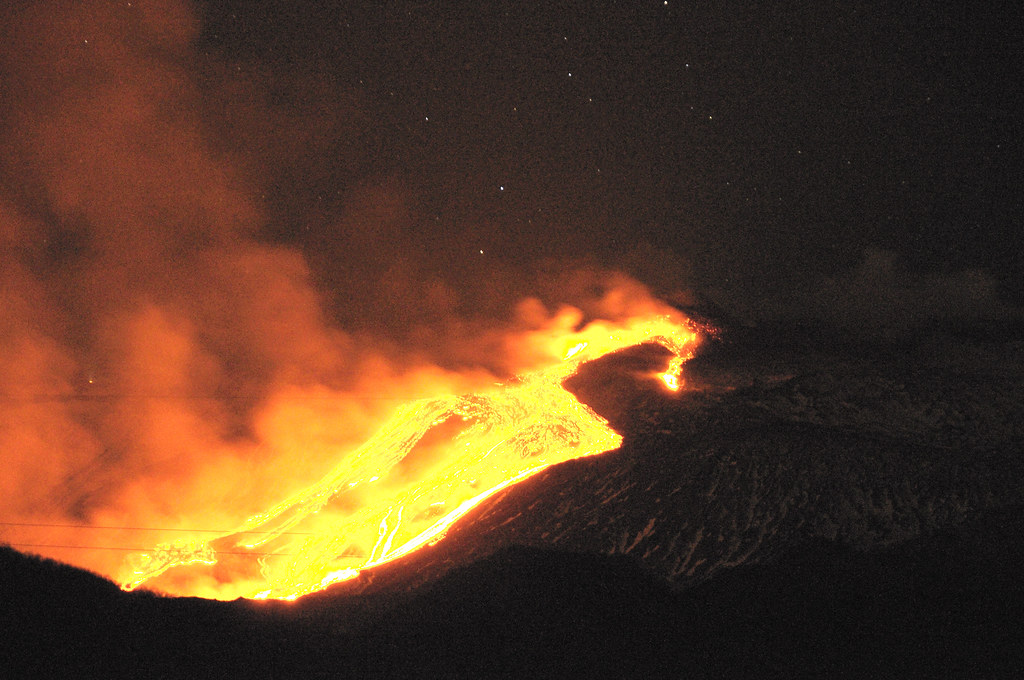
Shooting these striking photos – some taken just a few feet away from the flames – was far more physically demanding than most of Grunewald’s previous projects of landscapes and wildlife. “The main problem was the acidic gases that whirled constantly in the crater,” he says. Photographer Olivier Grunewald’s famous images brought global attention to this phenomenon, but capturing them required extreme dedication. Grunewald did not use any filters to capture his images of the blue fire.
“During my first trip, I lost a camera and two lenses that had been corroded by acid,” he says. “After we got back home, it took up to three weeks for our skin to lose the smell of sulfur.” These challenges highlight the harsh chemical environment created by the volcanic activity.
Conclusion
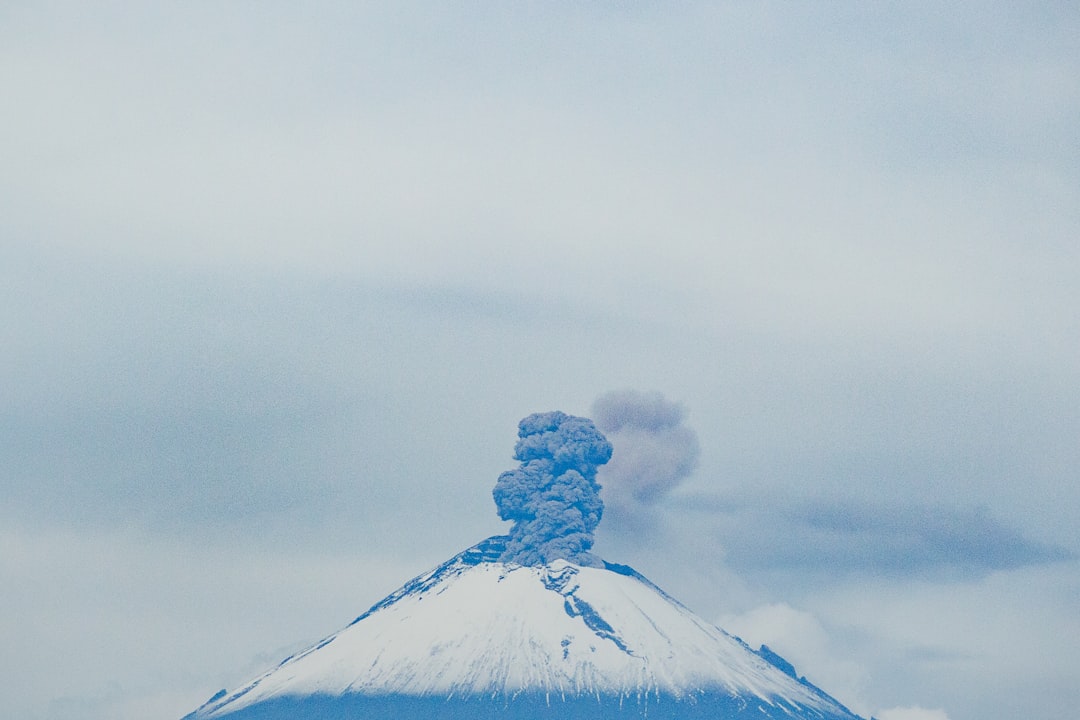
The blue flames of Kawah Ijen represent a perfect storm of geological and chemical conditions that create one of nature’s most spectacular displays. Understanding the chemistry behind sulfur combustion reveals why this volcano produces electric blue flames instead of typical orange lava flows. The combination of extreme temperatures, high sulfur concentrations, and oxygen-rich conditions creates a phenomenon that continues to amaze scientists and visitors alike.
This remarkable display serves as a powerful reminder of how chemistry shapes our natural world in unexpected ways. What other volcanic mysteries might be waiting to be discovered in remote corners of our planet?

Jan loves Wildlife and Animals and is one of the founders of Animals Around The Globe. He holds an MSc in Finance & Economics and is a passionate PADI Open Water Diver. His favorite animals are Mountain Gorillas, Tigers, and Great White Sharks. He lived in South Africa, Germany, the USA, Ireland, Italy, China, and Australia. Before AATG, Jan worked for Google, Axel Springer, BMW and others.

